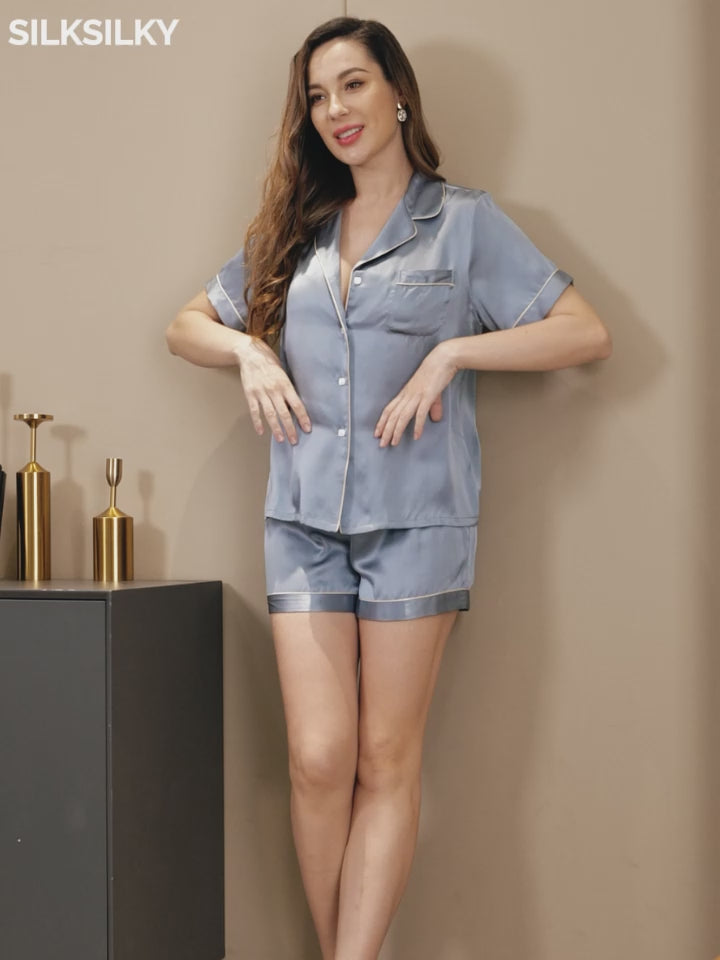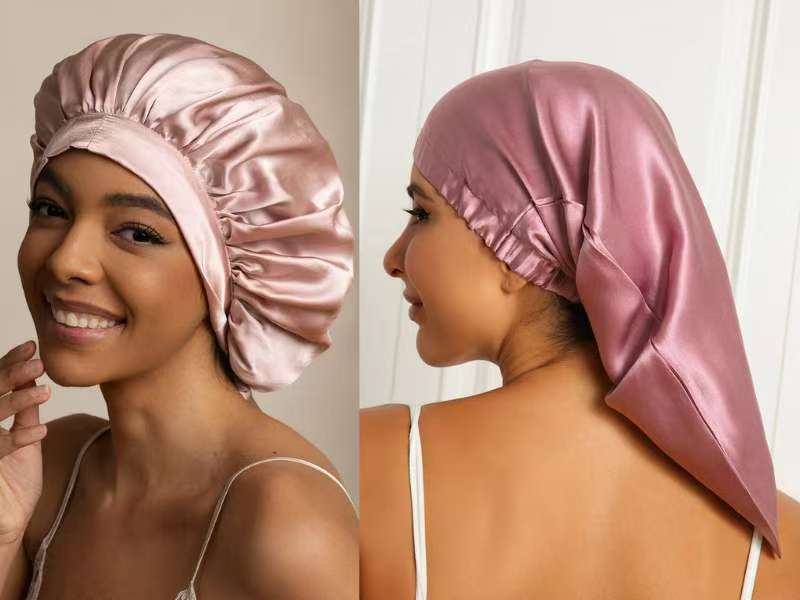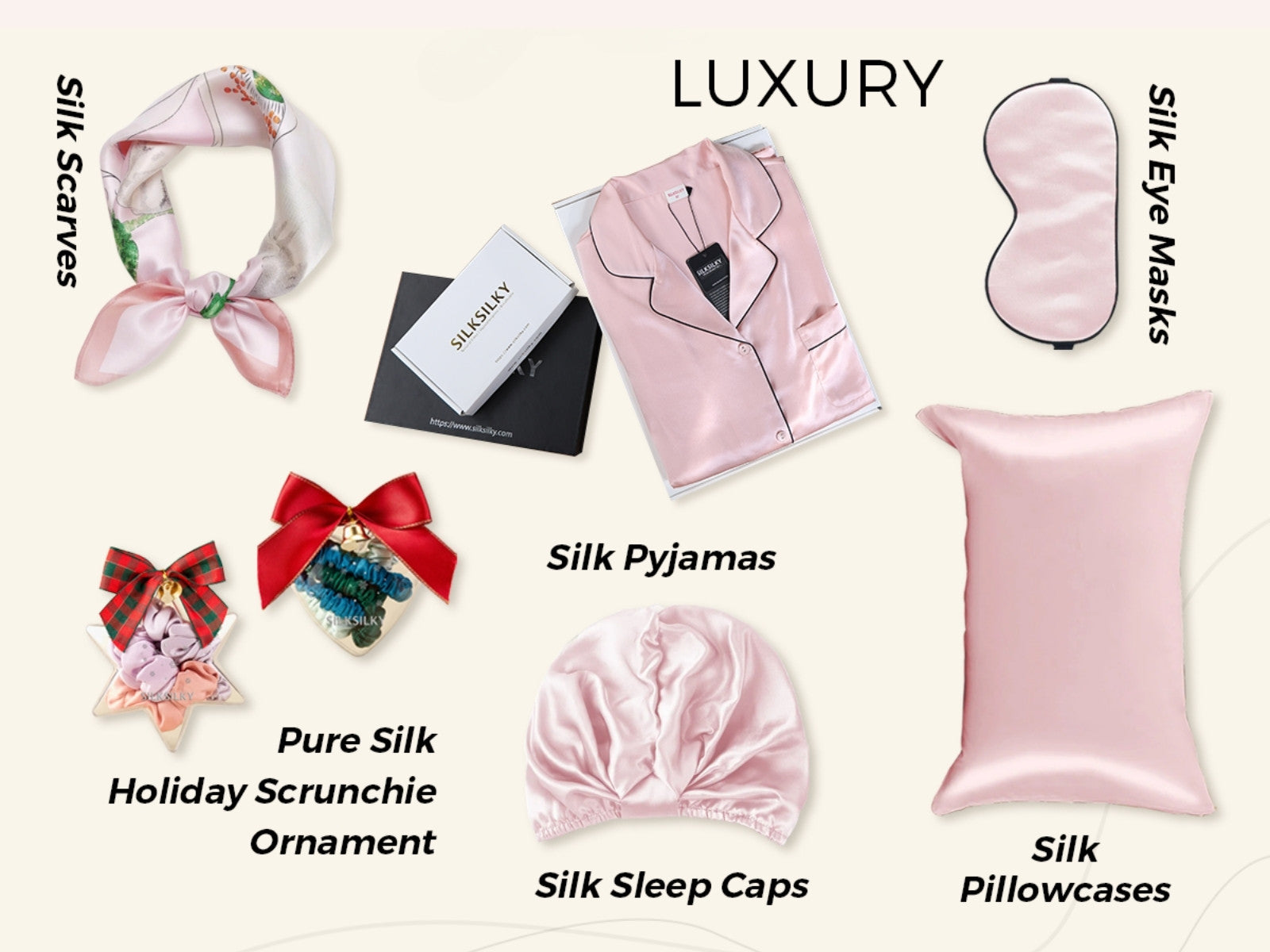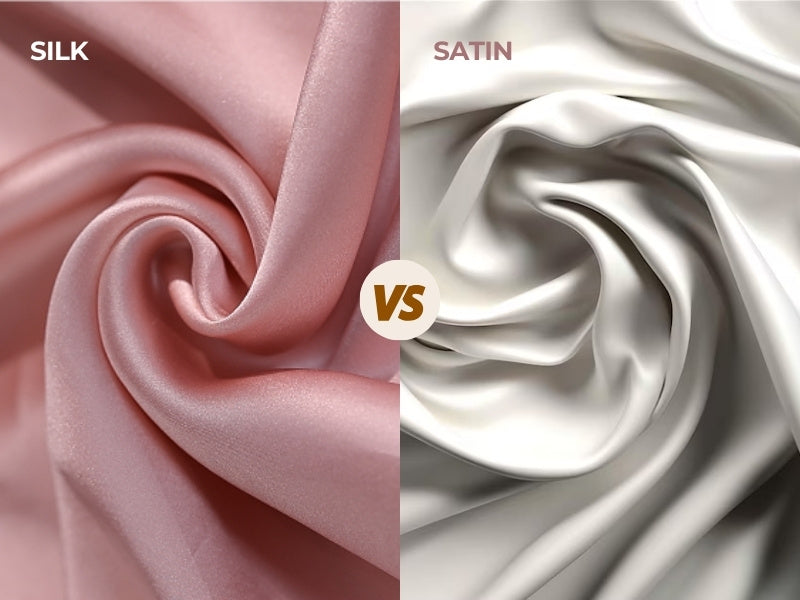How Silk Stops Tangling, Breakage, and Frizz for Good
Table of Contents
Quick Read
Yes, silk can significantly reduce frizz and improve hair health overnight. Using a silk pillowcase, silk sheet, silk bonnet, or silk duvet cover creates a smooth surface that minimizes friction, preventing hair from tangling and breaking. Silk, unlike cotton, won't absorb your hair's natural oils, so moisture remains locked in, which is particularly great for dry or curly hair textures.
Introduction
Waking up to frizzy, tangled, or brittle hair can make even the best morning a challenge. It's easy to point fingers at the weather, styling products, or hair type, but the true culprit may be right under your head—your pillowcase. Cotton is soft to the touch, but its absorbent qualities and rough fibers can cause friction and draw moisture out of your hair while you sleep. A simple change in fabric could mean less-fussy, healthier hair. Silk, with its smooth finish and kind qualities, goes to work while you sleep to minimize breakage, lock in moisture, and prevent tangles.
Why Cotton Pillowcases Aren't Ideal for Your Hair
Cotton might feel soft when you touch it, but it's not as gentle on your hair as it seems. While you sleep, your hair rubs against the surface of your pillowcase again and again. If that fabric is cotton, the texture and absorbency can work against your hair's natural health. Over time, this leads to more tangles, dryness, and even breakage. Here's why:
Cotton Causes Too Much Friction
Even under a microscope, cotton fibers aren't smooth. They have a rougher surface that grabs at your hair cuticle—the outer layer that protects each strand. When you toss and turn, your hair drags across the pillow and gets roughed up. That repeated friction can lead to knots, split ends, and broken strands. It's a lot like drying your hair with a towel too harshly instead of blotting it gently.
Cotton Pulls Moisture Out of Your Hair
Cotton is also very absorbent. Just like it soaks up sweat or spills, it also pulls moisture from your hair overnight. That includes both natural oils and any leave-in treatments you might use. When your hair loses too much moisture, it becomes dry, brittle, and much more prone to frizz and breakage.
How Does Silk Actually Protect Your Hair?
Silk isn't merely gentle—it's scientifically kinder to your hair. While cotton clutches and dries out strands, silk acts as a smooth barrier while sleeping. Its composition and natural qualities make it decrease damage, keep hair hydrated, and promote long-term strength. Here's how:

- Silk Allows Hair to Glide, Not Catch: Silk fibers are smooth, lengthy, and even in texture. That allows hair to pass over a silk surface with minimal resistance. Rather than catching or pulling, each strand glides easily. This holds the hair's outer layer—the cuticle—flat and secure, which reduces knots, tangles, and split ends. For individuals who wake up to a breakage mess or flyaways, making the change to silk can make a noticeable difference.
- Silk Keeps Moisture Where It Belongs: The other main advantage is that silk won't absorb moisture like cotton will. It's much less absorbent, so it won't draw away the natural oils your scalp produces—or any products you apply before bedtime. Your hair remains moisturized overnight, which prevents frizz, dryness, and brittleness. This is particularly crucial for curly, coarse, or color-treated hair that requires extra moisture care.
- Silk Contains Hair-Friendly Proteins: Silk is a protein fiber produced by silkworms. One of its primary natural proteins is sericin, which is frequently found in high-end hair products. Sericin smooths the hair shaft, aids in strength, and enhances elasticity. When you sleep on silk night after night, you're exposing your hair to this helpful protein on a low level—without having to put anything on.
Which Silk Product Should You Choose for Healthier Hair?
Yes, silk can really help minimize frizz and enhance hair health overnight. The trick lies in selecting the correct silk product that suits your hair type and sleeping pattern.
Silk Pillowcase
A silk pillowcase is a universal choice that reduces friction, so your hair doesn't get tangled and broken. The smooth surface of the silk pillowcase retains the natural moisture of your hair, making it less dry and frizzy. Suitable for all hair types, it's particularly useful for people who toss and turn a lot while sleeping. The smoothness of the silk pillowcase keeps your hair intact and reduces damage, making it an excellent option for overnight hair protection.

Silk Bonnet
A silk bonnet provides 360-degree coverage, holding your hair in and minimizing friction. It's great for preserving hairstyles such as curls or braids and is ideal for long or textured hair. The silk bonnet holds hair in place, preventing it from coming into contact with any surface, even when you toss and turn during sleep. It also seals in moisture, blocking dryness, split ends, and frizz.

Silk Sheet
Silk sheets provide a luxurious sleeping experience while benefiting your hair. The smooth texture reduces friction across your body, including your hair, minimizing tangling and breakage. They also help regulate temperature, ensuring a comfortable night's sleep. Silk sheets contribute to both skin and hair health by offering gentle care to your hair while you sleep.

Silk Duvet Cover
A silk duvet cover adds to your bedding by providing a smooth surface that minimizes friction. It keeps your hair's moisture level in check, so your hair does not dry out or become frizzy during the night. The silk duvet cover also adds to comfort in general, providing a temperature-controlled, snug sleeping environment that is good for your skin as well as your hair.
For the best hair health, try layering silk products. Wearing a silk bonnet and sleeping on a silk pillowcase provides all-around protection, and adding silk sheets and a duvet cover takes overall comfort and hair protection to the next level. This multi-layered system will keep your hair moisturized, smooth, and frizz-free while you sleep.

How to Choose True, High‑Quality Silk
When selecting a silk pillowcase or bonnet, looking closely at four key factors helps you find a product that's both effective and long-lasting. Here's what to check:
Momme Count: What Weight Is Just Right?
Momme is the measure of the density and weight of silk—imagine thread count for cotton. Silk bedding with a 19–22 momme is the perfect compromise between softness and durability. A 22 momme fabric will provide the durability for machine wash and everyday use while still being luxurious to the touch.
Silk Type: Why 100% Mulberry Silk Matters
The highest quality silk is from silkworms that have been fed only mulberry leaves. So 100% Mulberry silk is the best option you can go for—pure, strong, and smooth. Anything blended or artificial will not deliver the same advantages.
Weave: Charmeuse Means Ultra‑Smooth
Check for silk-marked charmeuse weave, which creates the fabric's lustrous finish and smooth surface. This weave reduces friction—just what you need to safeguard hair and skin.
Certification: Is It Free From Chemicals?
Opt for silk that has the OEKO‑TEX Standard 100 certification, indicating it has been tested for harmful substances at all stages of production. Certified silk is safe for hair, skin, and health-minded consumers.
Tired of Tangles? Silk Might Be the Answer!
Swapping to silk pillowcases and bonnets feels fancy, but it's actually smart for your hair. Silk fights friction, keeps moisture from escaping, and even adds protein-loving benefits. Stick with 100% mulberry silk, 19–22 momme, charmeuse weave, and OEKO-TEX certification for the best quality. Want smoother, shinier mornings? Silk's where it's at.
![[Light Blue] SilkSilky Pure Silk Notch Collar Women's Pajamas 001,](http://silksilky.com/cdn/shop/files/ab83afb9301666ee2f174a8ae72ffda4_4e9bb488-7880-40fe-9e69-f0fd823857c5.jpg?v=1764653199&width=1200)
![[Light Blue] SilkSilky Pure Silk Notch Collar Women's Pajamas 002,](http://silksilky.com/cdn/shop/files/db8dbeee5354fe3b631b963715847ffe.jpg?v=1764653202&width=1200)
![[Dark Red] SilkSilky Pure Silk Notch Collar Women's Pajamas 001,](http://silksilky.com/cdn/shop/files/599ed0811e1a5fcfa55bdc80a0279704_2643c850-a793-4475-a52b-7fef1bbd7e36.jpg?v=1762233837&width=1200)
![[Dark Red] SilkSilky Pure Silk Notch Collar Women's Pajamas 002,](http://silksilky.com/cdn/shop/files/9e022d4dd4f99aed4af8da3f58fcfd5b_efb9bafe-3d71-4283-9b81-e339ff08f352.jpg?v=1762233837&width=1200)
![[White] SilkSilky Pure Silk V Neck Nightgown 001,](http://silksilky.com/cdn/shop/files/a8ae95260a57844b1e2e00c4fcfabdcc_b922b270-af10-4e96-9493-0d877bd663db.jpg?v=1764140639&width=1200)
![[White] SilkSilky Pure Silk V Neck Nightgown 002,](http://silksilky.com/cdn/shop/files/24ac506750f8c38c51bb5b6d0ee15287.jpg?v=1764140639&width=1200)
![[Pink] SilkSilky Pure Silk Sleep Cap 001,](http://silksilky.com/cdn/shop/files/SilkSilky_Pure_Silk_Sleep_Cap_Pink_001_C-250529006.jpg?v=1762221980&width=1200)
![[Pink] SilkSilky Pure Silk Sleep Cap 002,](http://silksilky.com/cdn/shop/files/SilkSilky_Pure_Silk_Sleep_Cap_Pink_002_C-250529006.jpg?v=1762221980&width=1200)
![[Steel Blue] SilkSilky Pure Silk Notch Collar Women's Pajamas 001,](http://silksilky.com/cdn/shop/files/05b358f92fb5d252122b00d69a2fcfc5_88211a42-88c4-4448-8cb3-5f18529bfef8.jpg?v=1762237226&width=1200)








